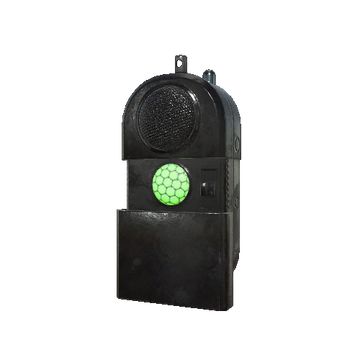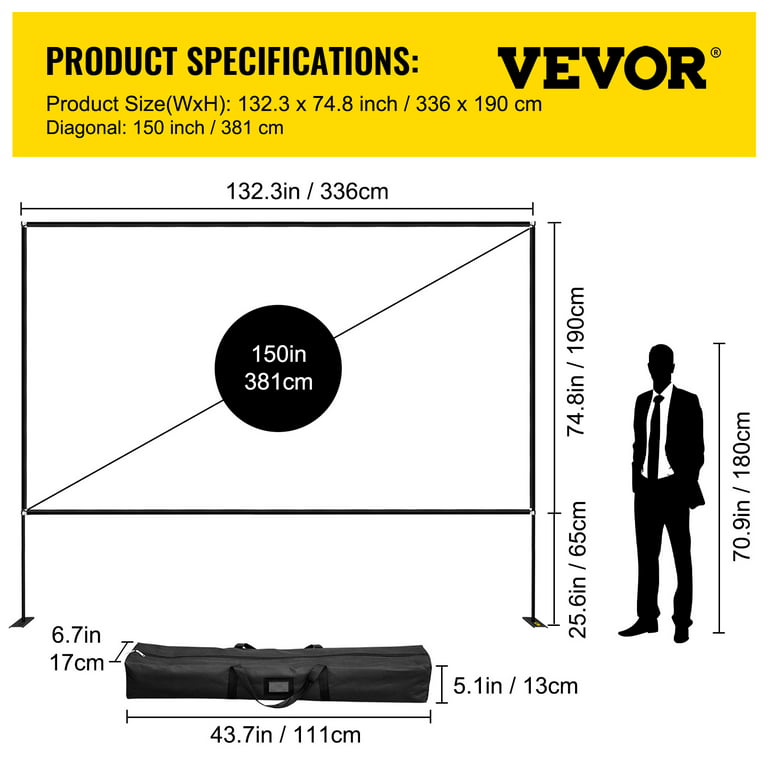Delving Into Projection Technology: The 3 LCD Projector Unraveled
Introduction
The world of projection technology is vast and ever-evolving, with several technologies vying for dominance in the industry. One such technology is the 3 Liquid Crystal Display (3 LCD) projector, which has been at the center of many tech discussions lately. This article takes an in-depth look at 3 LCD projectors, unraveling what they are, how they work, how they stack up against other blockbusters in the projector arena, and whether or not they could be the perfect solution for different projection needs. So, buckle up as we delve into remarkable projection technology.
What Is a 3 LCD Projector?
The field of projection technology is brimming with innovations, with the 3 LCD projector becoming a prominent figure recently. Designed with tri-pixel technology, a 3 LCD projector employs three Liquid Crystal Displays in the production of stunning, high-definition images.
- Origin: The concept of "3 LCD" resonates with the inclusion of three distinct panels that display red, green, and blue color components. These panels work in unison, each assigned to manage a specific color, thereby contributing to a broad color spectrum.
- Purpose: The ultimate aim of these three panels is to converge into one image. By achieving this, the 3 LCD projector can display sharp, brighter, and more accurate colors. This fusion of colors is what brings the images to life on your screen.
- Applications: The 3 LCD technology excels in scenarios demanding high color precision and brightness. Various fields, like professional presentations, home theater settings, and educational institutions, can leverage this projection technology for an enhanced visual experience.
In a nutshell, a 3 LCD projector takes a substantial stride in enhancing image quality, making it an optimal solution for situations that require vibrant, high-quality projections.
How Does a 3 LCD Projector Operate?
When it comes to the working process of a 3 LCD projector, it's a fusion of complex engineering and straightforward action. The magical transformation from a simple light source to an engaging and vivid image involves a series of crucial components.
Essential Elements of a 3 LCD Projector
Below is a quick rundown of the vital components contributing to the functioning of 3 LCD projectors:
- Light Source: The beginning of the process. It's usually a lamp that emits the white light used for projection.
- Dichroic Mirrors: These play a crucial role in dividing the white light from the lamp into three fundamental colors- red, green, and blue.
- 3 LCD Panels: Here, the segregated light from each color channel is modulated. Each panel handles a singular color, contributing to the sharpness of the final image.
- Prism: This component gathers the modulated light beams from each panel and blends them into one image.
- Projection Lens: The final stage where the unified image is projected onto the screen, providing viewers with a high-quality visual experience.
The Science Behind 3 LCD Projectors
The operation of a 3 LCD projector is a perfect amalgamation of optics, electronics, and mechanical engineering. The white light from the lamp is divided into primary colors by dichroic mirrors, processions through individual LCD panels where it's modulated, condensed back into a single image with the help of a prism, and projected on the screen through a lens.
Moreover, the technology does not involve a spinning color wheel, reducing the 'rainbow effect,' a common issue with other kinds of projectors. Consequently, 3 LCD projectors guarantee a seamless, silent, and highly efficient projection process, making them a popular choice across various sectors.
3 LCD Projectors Vs. Other Projectors: What Sets Them Apart?
Understanding the features and performance of different projectors can deepen our appreciation for 3 LCD technology's uniqueness. Let's delve into what separates 3 LCD technology from other prevalent projectors in the market:
- Image Quality and Brightness: In the vast majority of projectors, the factor of brightness often goes hand in hand with quality. 3 LCD projectors stand out with their exceptional brightness and high-quality images. They manage to deliver vibrant and lifelike graphics, enhancing viewer experience manifold.
- Color Accuracy: It's crucial to examine a projector's performance in color accuracy. The three separate panels in 3 LCD projectors produce each of the primary colors. This process ensures a greater accuracy in the hues, providing a more authentic visual experience.

- Silent Operation: A significant advantage is 3 LCD projectors' relatively silent operation. Due to the absence of a spinning color wheel, the technology operates without creating distracting noise, making it a great option for quiet spaces like home theaters or conference rooms.
- No 'Rainbow Effect': 3 LCD projectors don't use a spinning color wheel, which effectively eliminates the 'rainbow effect.' This visual anomaly, commonly seen in Digital Light Processing (DLP) projectors, can detract from the immersive experience by casting multiple colors onto the projected image.
- Energy Efficiency: Another distinguishing feature is energy efficiency. Owing to their design and structure, 3 LCD projectors can notably save energy in comparison to DLP projectors.

- Maintenance: The complexity of 3 LCD projectors implies that they may require more regular maintenance than other projectors. It's a noteworthy point to consider while deciding on the right projector for your needs.
In sum, the effectiveness of 3 LCD projectors stems from their unique design that tends to address most challenges posed by other projector technologies. From achieving high color accuracy and brightness to eliminating the 'rainbow effect,' 3 LCD projectors craft an unbeatable visual narrative, making them an optimal choice for various applications.
Are 3 LCD Projectors the Right Choice for You?
Choosing the right projection technology can be significantly influenced by your specific usage requirements. As you factor in the decision, here are some of the major considerations regarding the 3 LCD projector technology:
- Impressive Color Balancing: 3 LCD projectors were engineered by Epson in the 1980s with a focus on excellent color reproduction. The technology uses three individual color panels to handle the intensity of each primary color, rather than a single chip, delivering more vibrant and balanced color output.
- No "Rainbow Effect": Unlike some other projectors that employ a spinning color wheel, 3 LCD projectors don't produce a distracting 'rainbow effect'. This attribute makes them more comfortable to view for extended periods.
- Brighter Images: 3 LCD projectors typically display brighter images with a higher Color Light Output (CLO) compared to many other projector types.
- Whisper Quiet Operation: The unique structure of 3 LCD projectors allows them to run more silently than their counterparts.
- Maintenance Considerations: On the flip side, 3 LCD projectors have a slightly more complicated structure and may require more regular upkeep compared to DLP projectors.
Each of these points can significantly impact the viewer's experience; therefore, understanding their personal or professional use is crucial in making the right choice.
Conclusion
3 LCD projectors distinguish themselves from other projector technologies primarily in their image quality, brightness, and color accuracy. Devoid of a spinning color wheel, they don't suffer from the 'rainbow effect' produced by other projectors like Digital Light Processing (DLP) ones. Equally, 3 LCD projectors offer a greater Color Light Output (CLO), meaning brighter, more vibrant color images. They are also much quieter, thanks to their design and are usually more power-efficient than DLP projections. However, they have a more complex structure, hence may require more maintenance.
Related FAQs about what is 3 lcd projector
What are the advantages and disadvantages of 3 LCD projectors?
3 LCD projectors offer excellent color accuracy, are devoid of the 'rainbow effect', and have a higher Color Light Output for brighter visuals. They also run quietly, contributing to a disturbance-free viewing experience. However, being a bit complex, they may require more frequent maintenance compared to other projectors.
In what scenarios are 3 LCD projectors most effective?
3 LCD projectors are most effective in scenarios where high color accuracy and brightness are needed such as home theaters, professional presentations, and educational institutions. Their quiet operation and high-quality visuals offer a seamless, immersive experience in these settings.
How do 3 LCD projectors compare with DLP projectors in terms of performance?
3 LCD projectors generally offer brighter images with more vibrant colors and better color accuracy than DLP projectors. They also run quieter and don't experience the 'rainbow effect' seen in DLP projectors. However, DLP projectors might require less frequent maintenance due to their simpler structure.






